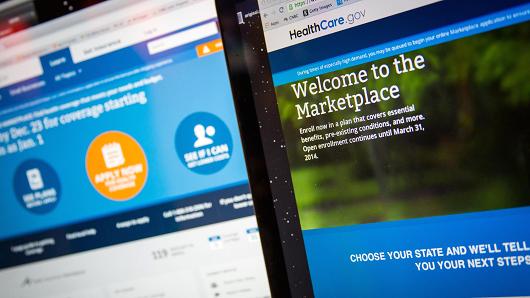 Thousands who think they’ve enrolled may not be covered due to 834 errors in electronic files
Thousands who think they’ve enrolled may not be covered due to 834 errors in electronic files
Guess what? Healthcare.gov, the Obamacre enrollment site, is still not working properly. Surprised? Probably not, but what may shock you is the fact that up to 30% of the applications filed on the site have not been processed correctly, according to recent estimates. Even sources within the administration currently admit that the number may be at least as high as 25%.
So what does this mean to anyone who has attempted to enroll in Obamacare? The short answer is that they may not be enrolled, even though they’ve invested their time, diligently filling out the site’s online forms.
What’s the problem this time? According to informed sources, it stems from something known in the industry as an 834 file error. For those of us who aren’t IT experts, the 834 is an electronic file that HealthCare.gov sends to an insurance company after a consumer decides on a plan. It carries personal data, including name, address, contact information, and Social Security number.
Sounds complicated, right? Maybe not so much. The 834 file format has been in use for a long time and the technology is both well-known and proven. Large employers and unions have been using the 834 file format to send enrollment data to insurance carriers well over a decade. Interesting, to say the least.
Speaking in defense of the system, White House senior communications adviser Tara McGuinness said that news of the failure “doesn’t accurately reflect the picture of what’s happening right now. We’ve got a team of experts already working closely with issuers to make sure that every past and future 834 is accurate. We’re confident they’ll succeed.”
Can we be as confident? In a December 1, 2013 report titled “HealthCare.gov Progress and Performance Report,” the Department of Health and Human Services (DHHS) offered the following assurances:
“The new management system and instrumentation have helped improve site stability, lower the error rating below 1%, increase capacity to allow 50,000 concurrent users to simultaneously use the site and will help drive continuous improvement on the site. While we strive to innovate and improve our outreach and systems for reaching consumers, we believe we have met the goal of having a system that will work smoothly for the vast majority of users.”
Clearly, the statement the error rate was “below 1%” is a massive exaggeration. Similarly, the contention that the system “will work smoothly for the vast majority of users” seems beyond ludicrous.
What exactly, is the nature of the problem? The New York Times reports that, “In some cases, the insurers did not receive the 834. In other cases, insurers received duplicate files for the same person, files for one person were sent to an insurer in another state, or the ‘relationship code’ was wrong so that, for example, a man’s daughter was listed as his wife.”
The Wall Street Journal reports, citing “people familiar with the matter,” that thousands of applicants “…have received inaccurate assignments to Medicaid or to the marketplace for private plans, or have received incorrect denials.” One example cited involves legal aliens in Illinois who are currently ineligible for coverage, but were told by Healthcare.gov that they actually were eligible.
Meanwhile, thousands of Americans are laboring under the incorrect assumption that they will have healthcare coverage as of January 1, 2014. Is there any way for these unfortunate folks to know whether or not they will be covered?
White House press secretary Jay Carney offers these words of advice and comfort: “If consumers are not sure if they are enrolled, they should call our customer call center or the insurer of their choice so that they can be sure they’re covered by January 1.”
CMS spokeswoman Julie Bataille, echoes this sentiment, saying that “consumers should absolutely call their selected plan and confirm that they have paid their first month’s premium, and coverage will available January 1,” Bataille said.
The administration also claims that is currently in the process of contacting consumers who have begun or submitted applications via HealthCare.gov, in an effort to advise them of the steps they must take to confirm their enrollments.
Offering additional assurances as to future 834 errors, Bataille says that the bug “has now been fixed and
